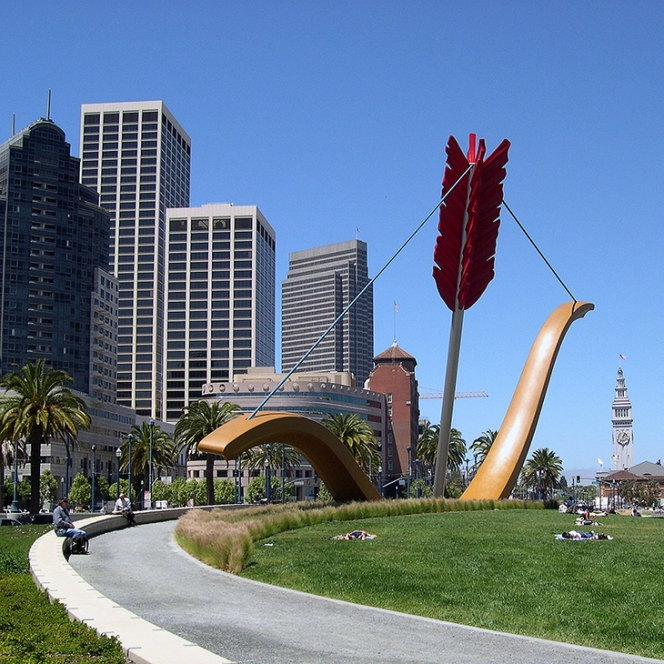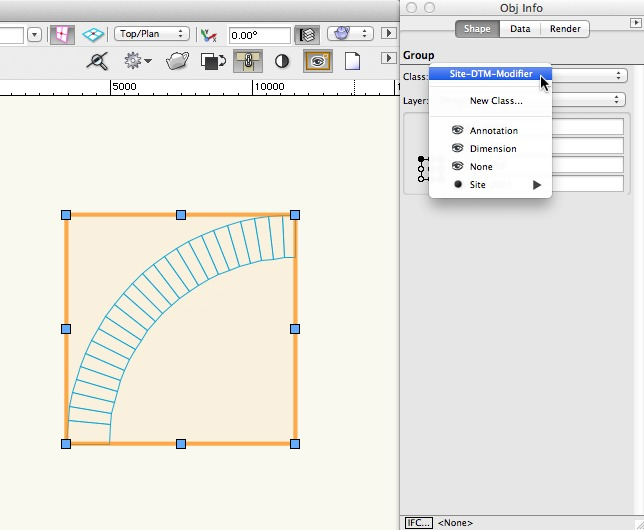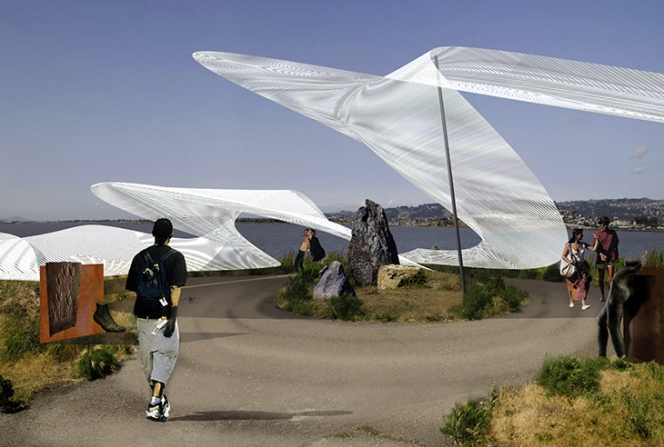Your Cart is Empty
Customer Testimonials
-
"Great customer service. The folks at Novedge were super helpful in navigating a somewhat complicated order including software upgrades and serial numbers in various stages of inactivity. They were friendly and helpful throughout the process.."
Ruben Ruckmark
"Quick & very helpful. We have been using Novedge for years and are very happy with their quick service when we need to make a purchase and excellent support resolving any issues."
Will Woodson
"Scott is the best. He reminds me about subscriptions dates, guides me in the correct direction for updates. He always responds promptly to me. He is literally the reason I continue to work with Novedge and will do so in the future."
Edward Mchugh
"Calvin Lok is “the man”. After my purchase of Sketchup 2021, he called me and provided step-by-step instructions to ease me through difficulties I was having with the setup of my new software."
Mike Borzage
The Edge: John Roloff – Paradise Reconsidered
September 16, 2014 5 min read
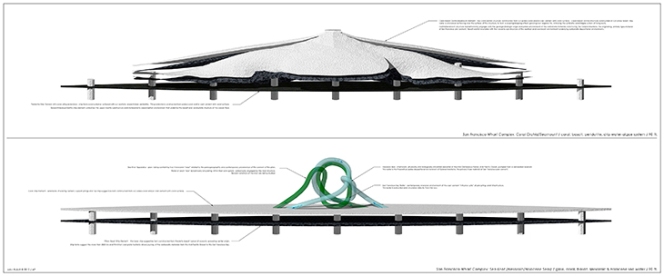
Novedge: Tell us a bit about who you are and what you do
John Roloff: I am an artist with a background in geology who works with natural systems, architecture and landscape themes, that may take the form of an environmental project, a exhibition or installation or a conceptual proposal.

Novedge: Your practice combines different disciplines. How do they inform each other?
John Roloff: A common element in many works is a relationship to a particular site which can be physical or conceptual. Another common quality is psychological or emotive property of an object or situation. Each of these dynamics often suggest an interaction of disciplines, images, or qualities in pursuit of a new idea and/or physical assemblage.
Novedge: Can you talk about your creative process? How do you approach each project?
John Roloff: Researching the geologic, paleogeographic or other historical attributes of a situation or site often suggests analogs or metaphors and connections that the site may hold that are unseen and can have poetic an aesthetic implications. Themes, objects and structures also have hidden qualities that experimentation (as a form of research) may also be revealed, related, accreted, displaced with other inquiries or constructs. The ship, as a metaphor for transformation, displacement and transit has been used in many works as a “site” for unification and poetic essence.
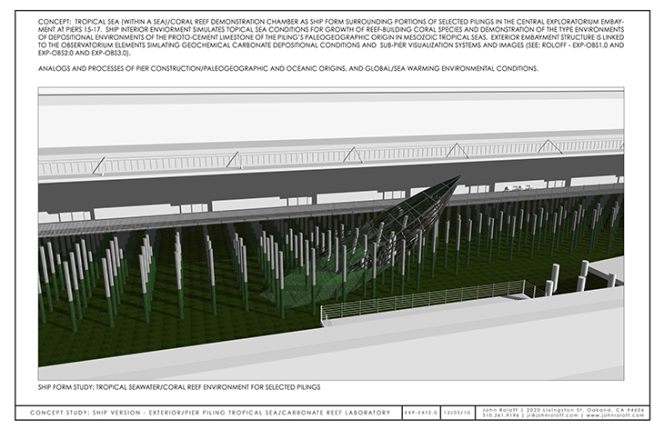
Novedge: What is a recent project that you worked on?
John Roloff:
Protogaea Civica (Geology Flags: Franciscan Formation/San Francisco, CA II)
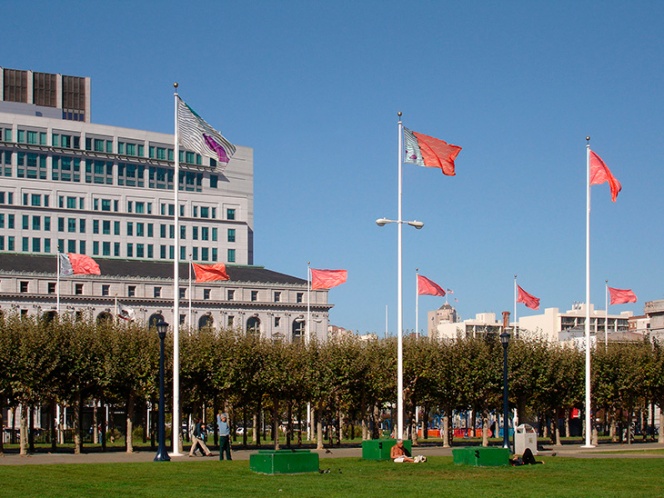
This project is comprised of 18 digitally printed and 6 hand-painted nylon flags installed at the San Francisco Civic Center Plaza, 2005.
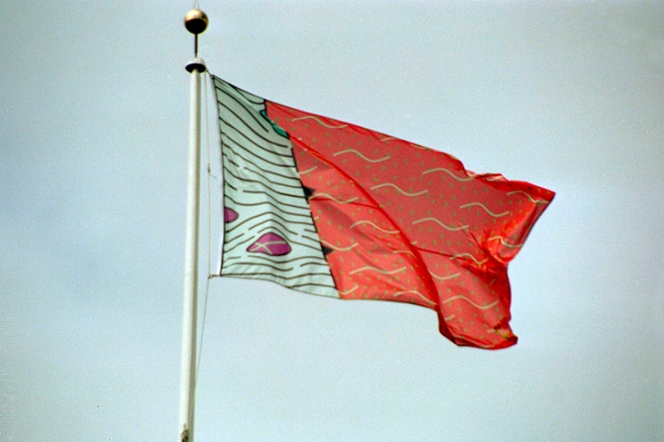
This is the second of two variations of the Geology Flags Project, a system of symbolic flag demarcation of site-specific geologic structures and materials including for this site: the Alcatraz Terrain, the Hunters Point Shear Zone, the larger Franciscan Complex and the copper cladding of the new de Young Museum. This version uses 19 flag poles of the site as part of the 2005 exhibition, High Five, presented in conjunction with the opening of the new de Young Art Museum in Golden Gate Park. Commissioned by the International Center for the Arts, San Francisco, CA.
The Seventh Climate (Paradise Reconsidered)

5400 sq. ft., Trachycarpus fortunei – Windmill/Chusan Palm (Taiwan, Chusan Islands), Magnolia denudata – Yulan/Tulip Magnolia (Central China), Betula jacquemontii – Himalayan Birch (Western Himalaya), Metasequoia glyptostroboides- Dawn Redwood (China, paleo-North America, Asia, Europe), overhead precipitation and sun/moonlight system with electronic, programming, recycled concrete rubble, I-5 Colonnade Park, Seattle, WA, 2006. This project emerges from the interaction of 6 elements, each representing a different climate, memory and/or ecology: four species of trees from distinct biome/terrains of the North and South Hemispheres planted as one organism, a simulation by lighting and artificial rain of the 1960 Seattle, pre-freeway precipitation, sunlight and moonlight cycles, and the current ambient weather of Seattle. A commission by the City of Seattle Office of Arts and Cultural Affairs, for an environmental project as part of the 2000 Pro Parks Levy.
Étude Atlantis
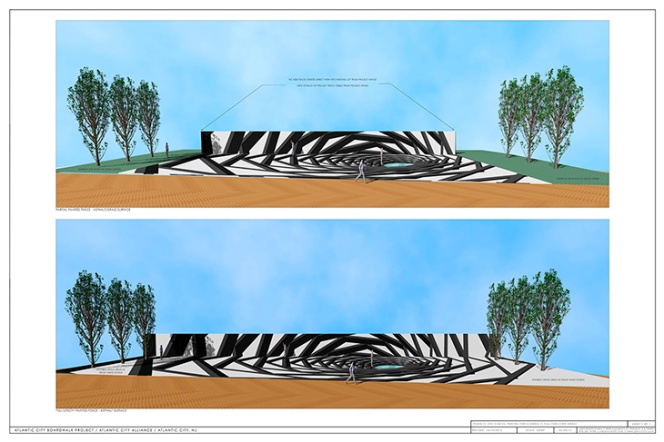
Atlantic City, NJ, painted asphalt, mirrored stainless steel, plantings, water, lighting, wood, concrete, 2012, part of a larger, multi-site project, ATLANTIC: wonder, curated by Lance Fung.
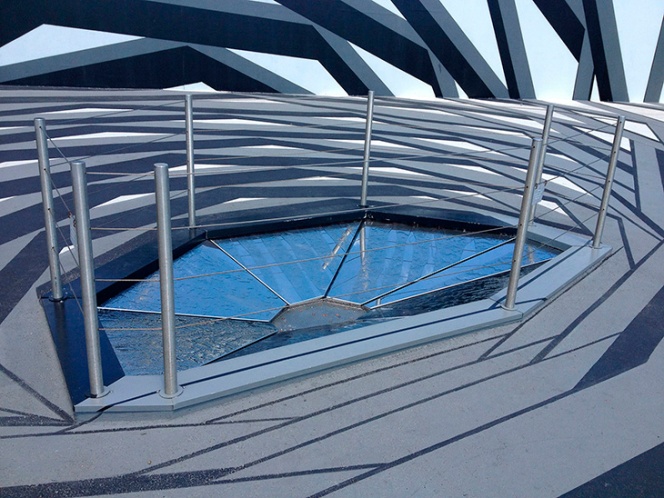
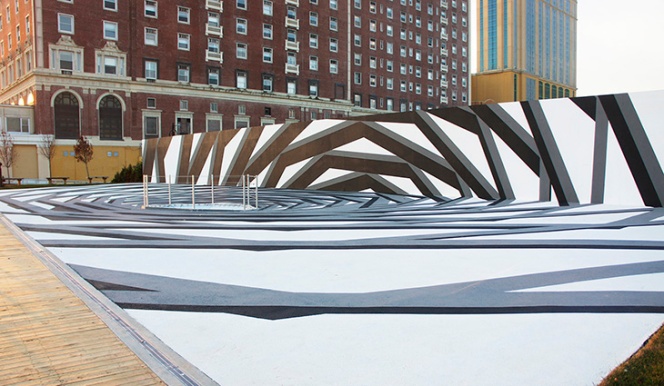
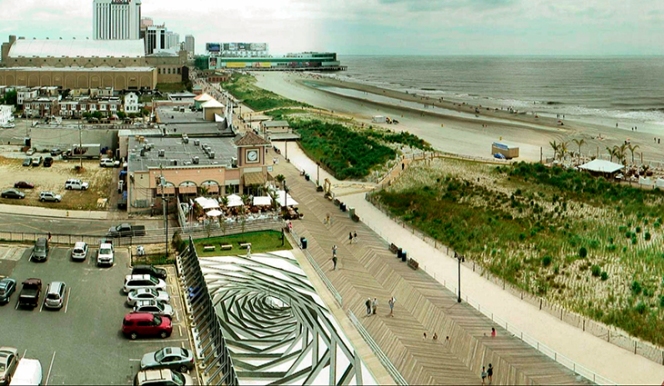
Étude Atlantis is imagined as a visual instrument for the social and philosophical exercise of “finding Atlantis.” This project is inspired by a complex matrix of sources including: the work of the musician John Cage, the architect Arthur Erickson, the mathematician Ivars Peterson, the global position of Atlantic City, oceanography, renaissance church floor design and camouflage ship painting, among others. The antipode of Atlantic City, or direct line through the center of the earth, emerges from the sea floor off the SW coast of Australia, near the underwater Naturaliste Plateau, considered by some to be a southern Atlantis. Étude Atlantis presents to the participant a stage-like environment where participants may traverse and explore a gigantic graphic of illusionistic decent and a complimentary central “cistern” reflecting the sky above and conceptually that of it’s antipode. These visual elements can be imagined as a theatrical playground and puzzle-space to consider mythic quests, cognition and geopolitical relationships.
San Francisco Wharf Complex
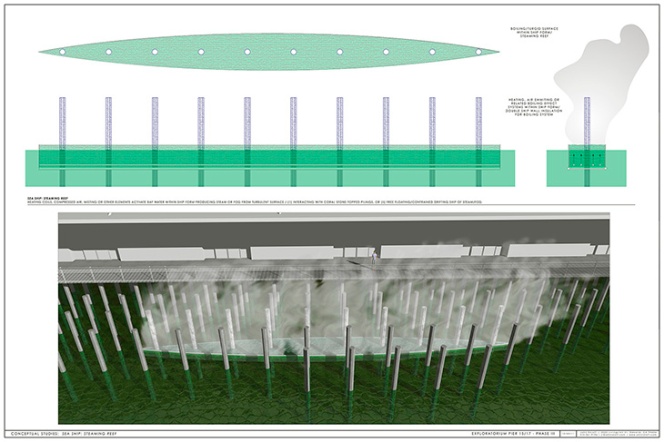
San Francisco Wharf Complex (SFWC) is a conceptual and physical site that consists of the structure, environment and history of the majority of the built San Francisco wharf/waterfront system and selected landfill areas from approximately Pier 1 at Fort Mason to Candlestick Park, as well as research, studies and proposals for artworks related to this sea/landscape developed from 2008 to the present.

Many of these concepts were developed during a multi-year relationship with the Exploratorium, San Francisco, CA, that included support from the National Science Foundation, Bernard Osher Foundation and the National Endowment for the Arts as well as the generosity of the Exploratorium and it’s staff. Works such as: San Francisco Wharf Complex: Coral Orchid/Seamount, 2012, and San Francisco Wharf Complex: Sea Knot (Mesozoic/Holocene Seas), 2012, represent examples of the apogee and distillation of research, site study and project development of SFWC.

San Francisco Wharf Complex imagines the San Francisco wharf/waterfront system as a singular landscape/formation contextualized within the geologic and paleo-geographic history of northern and central California. This relationship of ideas and histories places the Anthropocene built environment within larger cycles of geologic time, natural change and landscape evolution. Research into the history and geologic relationship of the pier/wharf system to the underlying Franciscan Complex as well as more recent geologic structures, spawned numerous metaphors reflected in the concepts and proposals generated in SFWC. PHASE I and II site studies and project concepts such as: Concept Study: Observatorium/Pier Piling Carbonate Laboratory, 2010 and Ship Form Study: Tropical Seawater/Coral Reef Environment for Selected Pilings, 2010, are examples of research and their conceptual manifestations. The idea of the piers as a landscape made of earlier landscapes through their paleo-geographic and geologic history unearthed special relationships of the San Francisco Bay Area to geologic time, ancient tropical seas, coral reefs, plate-tectonics, accreted terranes, ancient and contemporary climate change, as well as a host of poetic analogs and metaphors for those relationships. The majority of the concepts were developed as proposals for sculptural and environmental artworks for implementation at piers 15/17 and/or other waterfront sites.
Novedge: What software do you use?
John Roloff: The primary software I use for project design and concept visualization is Vectorworks Designer, which allows one to work with real-world scale and relationships in a virtual context. Layout and image manipulation are done mainly with Adobe Illustrator and Photoshop, video works are edited mainly in Final Cut Pro. Cinema 4D is a new software I am beginning to utilize to create animated visualizations for projects, as well as Rhino for 3D printing and more complex modeling.

Novedge: How does teaching inform your art practice and vice versa?
John Roloff: I have taught classes about installation, site design and concept/proposal development, as in my practice, Vectorworks is a primary software for that class. I also have a deeper history of working in ceramics, which I viewed as an extension of landscape and geologic materiality and process, both conceptually and in practice. I think there is a lot of infusion of this approach in my teaching through which, a long, continuing conversation with students and colleagues (it has now been over 40 years) has enriched me (and hopefully others) along the way.
Novedge: What is the best advice you have ever received?
John Roloff: From a past Dean at the San Francisco Art Institute, where I am on the faculty: “Pick your battles…”
See more of John's work on his website. And don't forget to get your own copy of Vectorworks, Cinema 4D and Rhino.
Related articles
Also in NOVEDGE Blog

Enhance Your Designs with VisualARQ 3: Effortless Geometry Extensions for Walls and Columns
April 30, 2025 8 min read
Read More
MecSoft Unveils RhinoCAM 2025 and VisualCAD/CAM 2025 with Enhanced Features
March 08, 2025 5 min read
Read MoreSubscribe
Sign up to get the latest on sales, new releases and more …



